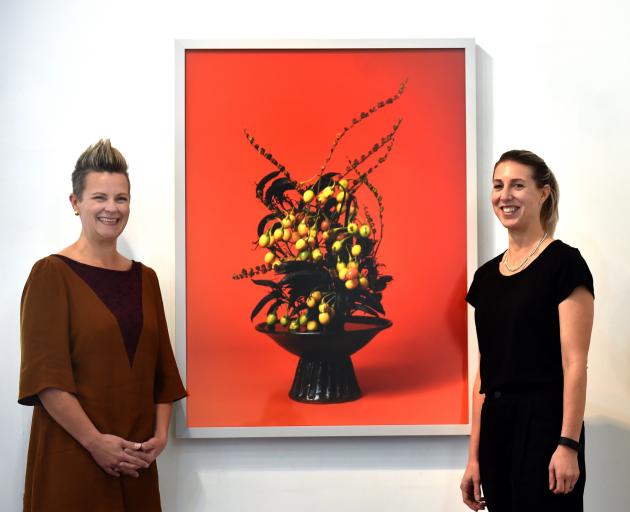
A curiosity about what would happen when New Zealand's top female photographer's works were shown together has driven Milford Galleries' curators to create a show usually seen in a public space.
The dealer gallery represents photographers including Lisa Reihana, New Zealand's representative at the Venice Bienniale this year, and Yuki Kihara, who has recently shown at the Orange County Museum of Art and the Honolulu Bienniale.
''There was this wonderful pool of female photographers getting recognition at the time,'' Milford curator Vanessa Jones said.
Their success got Jones and fellow Milford curator Lisa Wilkie thinking.
''We have a great collection of female artists in New Zealand who all exhibit separately. What would happen if we brought them together? What wonderful things could we discover and what could we see if we brought them together?'' Jones said.
''Bringing in these artists and seeing what we could contrast or compare.''
They were really interested in investigating what sort of themes the artists were looking at, Wilkie said.
The gallery has also represented Christine Webster, who had a seminal photography show at Dunedin Public Art Gallery, which stemmed from her work as a Frances Hodgkins Fellow.
''At the time they were shocking. They dealt with gender, transgenderism and I remember going to see it. It had a warning about the themes and the nudity.''
While Milford had these several connections, they knew there were many more female photographers out there.
''Is there something about New Zealand female photographers that is similar? Do they look at issues with a particular perspective or are they just working doing their own thing?'' Wilkie said.
''Is there a lens of gender that can be applied or is this just a myth. Do they work completely separately.''
Jones said: ''Do they have completely unique voices and gender does not come in to it?''
It is a concept that came about because of Jones and Wilkie's interest in feminism, and the pair hope
the show will provoke discussion about the role of female photography and their approach to issues.
''If people are provoked and ask questions we'll be happy about that. ''
The pair have gathered together about 50 works from photographers ranging from the social documentary of Ans Westra, who is in her 80s, to the highly produced portraiture of Lisa Reihana.
''They are often seen in their own body of work but not within a larger body of work.''
''It's been an incredible privilege to get them together in one space. The artists have been wonderfully enthusiastic,'' Jones said. ''Really intrigued by the idea.''
There is so much more to the discussion than just gender. It incorporates economics, politics and those areas in between gender, they said.
''What does gender mean? It may be a smaller part of a much larger puzzle,'' Wilkie said.
Westra's work touches on class, violence and protest movements.
''It's very interesting how she has framed her works.''
In a first for the gallery, its whole space will be given over to the exhibition.
''We have used a public gallery methodology and applied it to a dealer gallery to create a show that is maybe not as usual.''
They believe the show will create interesting conversations between works such as Anne Shelton's still life, Ans Westra's social commentary and Anne Noble's Antarctica series.
''Then we've got portraits from Lisa Reihana of works that are at the Bienniale,'' Jones said.
Each artist has their own unique voice and visual language, as well as coming from different cultural backgrounds which creates a diversity of voices.
''There are artists early in their career, like Yuki, and then very senior artists, such as Noble, Shelton and Westra. It's a very interesting mix.''
Some of the works Jones and Wilkie selected are overtly looking at gender issues, such as Kihara's Samoan Savage works and Reihana's Diva features a transgender woman.
Then there are Shelton's recent Jane Says series looking at issues around how women have been portrayed throughout history and using plants that have been used in female health for birth control.
Noble's major work, Bitch and Slippers, features heavy machinery with female names.
''If that was not taken by a woman, how would you look at it?,'' Jones said.
''Her landscapes show a very cool environment. There is no warmth.''
Then there is Natalie Robertson's image of communal food gathering - men out gathering Kaimoana - and Reihana's Captain James Cook as a female.
''Not only does it make the figure feel more real and everyday, it could be the boy next door and could have been the girl next door.''
As well as showcasing diverse takes on the gender issue, the works also showcase a diverse range of photography practice and how photography has developed over time.
Getting the works together had been logistically very tough as some some are on loan from other collections, galleries or the artists themselves. Some are exhibition prints, some are not.
''While it will have the feel of a public show, people can purchase the works.''
Photography as an art form has grown expediently in the past 15 years.
''Photography is very much the wiz kid, the golden child of a lot of collectors now,'' Wilkie said.
Many of the works have been exhibited in Auckland or Australia, but not Dunedin.
''It's really, really cool to have them here.''












